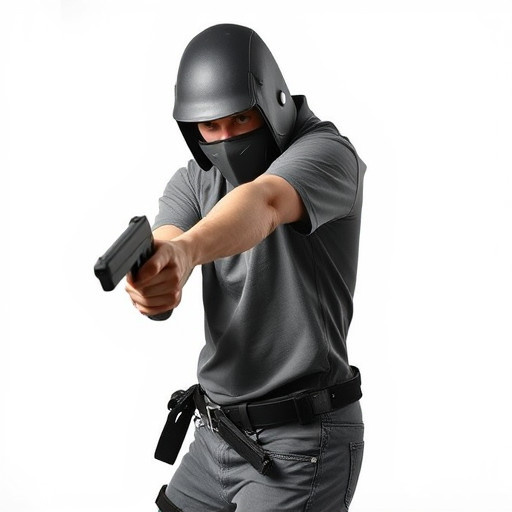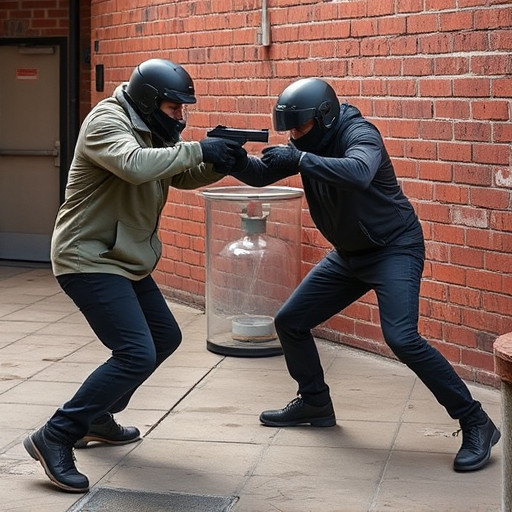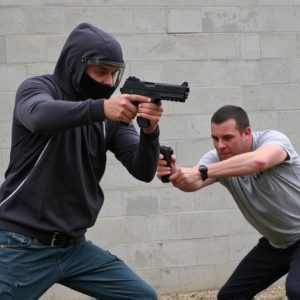Taser Paralysis Duration: Factors, Safety, and Stun Gun Quality Price Range
Tasers temporarily paralyze individuals through electrical stimulation, with duration varying by mod…….
Tasers temporarily paralyze individuals through electrical stimulation, with duration varying by model, distance, BMI, physical condition, and operator training. High-quality stun guns (from $50+) use advanced tech to deliver stronger, longer shocks compared to budget options. Legalities and safety precautions govern Taser deployment, emphasizing proper training and investing in quality stun guns within diverse price ranges for effective self-defense while adhering to regulations.
“Taser deployment, a controversial yet widely used non-lethal force tool, can lead to temporary paralysis. But how long does this effect last? This article delves into the intricacies of taser deployment and its impact, exploring critical factors influencing paralysis duration. We analyze the role of stun gun quality and pricing, revealing surprising insights that challenge conventional beliefs. Additionally, we dissect legal considerations and safety precautions surrounding their use, emphasizing the importance of understanding both the technology and its limitations, especially in light of varying price ranges for quality stun guns.”
- Understanding Taser Deployment and Its Effects
- Factors Influencing Paralysis Duration
- The Role of Stun Gun Quality and Pricing
- Legal Considerations and Safety Precautions
Understanding Taser Deployment and Its Effects

Taser deployment is a powerful law enforcement tool designed to temporarily incapacitate individuals through electrical stimulation. When a Taser is activated, it fires two probes connected to wires, delivering a high-voltage, low-current electrical pulse to disrupt muscle control and cause temporary paralysis. The effects of a Taser strike can last for several seconds, rendering the targeted person immobile. Understanding this technology and its consequences is crucial when discussing the duration of paralysis associated with its use.
The duration of paralysis from Taser deployment can vary based on multiple factors, including the model of Taser used, the distance between the operator and target, body mass index (BMI) of the individual, and their physical condition. On average, individuals can expect to experience incapacitation for 3-5 seconds. However, for individuals with a higher BMI or those with certain medical conditions, the paralysis may last up to 7-10 seconds. It’s important to note that while Tasers are designed to be non-lethal weapons, their use does carry risks and potential side effects. In terms of pricing, quality stun guns can range from $50 to several hundred dollars, depending on features and brand.
Factors Influencing Paralysis Duration

The duration of paralysis caused by a Taser can vary significantly depending on several factors. One key determinant is the model and power output of the Taser deployed. Advanced models with higher voltage and more advanced probe technology tend to induce longer periods of neuromuscular incapacitation. Additionally, the distance between the operator and the target plays a crucial role; closer proximity generally results in faster recovery due to reduced electrical conduction time.
Another factor influencing paralysis duration is the individual’s physical condition and body mass index (BMI). People with higher muscle mass or certain medical conditions may experience longer periods of immobility despite the same Taser settings. Moreover, environmental factors like temperature and moisture can impact the efficiency of the Taser’s probes, potentially affecting the overall duration of paralysis. Lastly, training and expertise of the operator can lead to variations in application time and technique, which indirectly influences how long an individual remains paralyzed. When considering a stun gun for personal protection, it’s essential to research and compare models within the desired price range for quality stun guns, keeping these factors in mind to ensure effective self-defense.
The Role of Stun Gun Quality and Pricing

The effectiveness of a stun gun, and consequently its impact on paralysis duration, is significantly influenced by its quality. High-quality stun guns employ advanced technologies like powerful capacitors and precise current delivery systems to ensure a strong electrical shock that effectively immobilizes the target for an extended period. These devices often come with safety features, ensuring user control and minimizing off-target effects.
When considering the price range for quality stun guns, it’s essential to remember that cost is indicative of the device’s performance and reliability. While budget-friendly options are available, they may lack advanced features and deliver less intense shocks. Conversely, top-tier models offer superior durability, longer battery life, and more precise control, which can contribute to a longer period of paralysis. The price range for quality stun guns typically starts from around $50 for basic models and can reach several hundred dollars for advanced, high-performance devices.
Legal Considerations and Safety Precautions

When discussing the duration of paralysis from Taser deployment, it’s crucial to consider legal implications and safety precautions. Law enforcement agencies and individuals in high-risk professions must adhere to strict protocols to ensure responsible use. The legality of Tasers varies by jurisdiction, with some countries and states permitting their use only by authorized personnel due to potential health risks and the force involved.
Safety precautions extend beyond legal boundaries. It’s important to emphasize proper training for all users, as improper deployment can lead to adverse effects, including prolonged paralysis. Additionally, the market offers a range of quality stun guns with varying price points. Consumers should invest in devices that meet industry standards and have undergone rigorous testing to ensure effectiveness and safety. This not only guarantees optimal performance but also aligns with legal requirements, ensuring responsible use and minimizing potential risks.
In understanding the duration of paralysis from Taser deployment, several factors come into play. As discussed in this article, the impact can vary based on equipment quality and pricing within the diverse price range for quality stun guns available. Legal considerations and safety precautions are paramount to ensure responsible use. By navigating these aspects, we can better comprehend and mitigate the effects of Taser deployment, fostering safer practices across the board.


